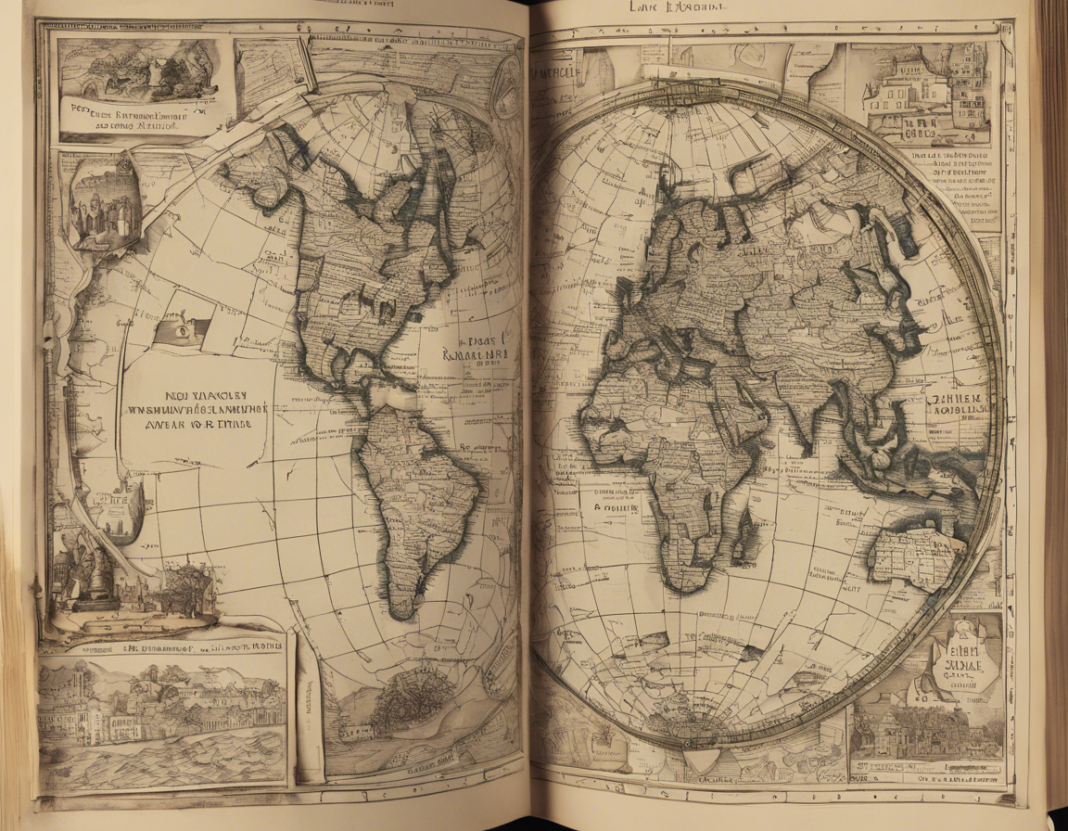Maps have been an essential tool for humans for centuries, aiding in navigation, exploration, and understanding of the world around us. From ancient cave paintings to high-tech digital maps, cartography has evolved and expanded to serve various purposes in different fields. In this comprehensive guide, we will delve into the world of maps – their history, types, uses, and significance in today’s digital age.
The History of Maps
Maps have a long and rich history, dating back to ancient times when early civilizations crafted rudimentary maps to navigate their surroundings. Some key points in the history of maps include:
Ancient Maps
- Babylonian Maps: Among the oldest known maps are the Babylonian clay tablets from around 600 BCE, showing simple sketches of land and rivers.
- Greek and Roman Maps: Ancient Greek and Roman civilizations were pioneers in cartography, with scholars like Ptolemy creating intricate maps of the known world.
Medieval Maps
- Mappa Mundi: In the Middle Ages, Mappa Mundi were popular, depicting the world from a religious perspective, with Jerusalem often at the center.
- Portolan Charts: Sailors used detailed portolan charts for navigation, showing coastlines, ports, and landmarks.
Age of Exploration
- Age of Discovery: The 15th and 16th centuries saw an explosion in mapmaking as explorers like Columbus and Magellan ventured into uncharted territories, leading to the discovery of new lands.
- Mercator Projection: Gerardus Mercator’s projection revolutionized mapmaking by depicting the Earth on a flat surface with minimal distortion, aiding in navigation.
Types of Maps
Maps come in various types, each serving a specific purpose:
Political Maps
- Show boundaries between countries, states, or cities.
- Used for understanding geopolitical divisions and voting districts.
Physical Maps
- Highlight natural features like mountains, rivers, and deserts.
- Useful for understanding topography and landforms.
Topographic Maps
- Provide detailed information on terrain through contour lines and elevation data.
- Essential for hiking, urban planning, and resource management.
Climate Maps
- Display climate zones and weather patterns.
- Help scientists study climate change and plan for environmental events.
Road Maps
- Focus on roads, highways, and transportation networks.
- Aid in navigation for drivers and travelers.
Nautical Charts
- Used by sailors to navigate oceans, showing depths, currents, and hazards.
- Essential for safe maritime travel.
Uses of Maps
Maps serve a multitude of purposes across different industries and disciplines:
Navigation
- Maps help individuals navigate unfamiliar places, whether on foot, by car, or through public transportation.
- GPS and digital mapping apps have revolutionized navigation, providing real-time directions and traffic updates.
Urban Planning
- City planners use maps to design infrastructure, zoning regulations, and public spaces.
- Geographic Information Systems (GIS) software enables detailed analysis of urban environments for sustainable development.
Emergency Response
- During natural disasters or emergencies, maps are crucial for first responders to locate and aid those in distress.
- Mapping technologies like drones and satellite imagery assist in disaster management and recovery efforts.
Environmental Conservation
- Conservationists use maps to identify biodiversity hotspots, plan protected areas, and track wildlife populations.
- Remote sensing and GIS tools help monitor deforestation, habitat loss, and climate impacts.
Business and Marketing
- Companies utilize demographic maps to target specific customer segments, plan retail locations, and analyze market trends.
- Location-based services like geotagging and geofencing optimize marketing strategies and customer engagement.
Digital Mapping Technology
With the advancement of technology, digital mapping has transformed the way we interact with maps:
Geographic Information Systems (GIS)
- GIS software allows users to overlay, analyze, and visualize geographic data for informed decision-making.
- Governments, businesses, and researchers use GIS for spatial analysis, resource management, and disaster planning.
Global Positioning System (GPS)
- GPS satellites provide real-time location data for navigation, tracking, and surveying.
- GPS devices and smartphone apps have become ubiquitous tools for outdoor enthusiasts, drivers, and logistics companies.
Online Mapping Platforms
- Platforms like Google Maps, MapQuest, and OpenStreetMap offer interactive maps for users worldwide.
- These platforms provide directions, satellite imagery, traffic updates, and local business information.
Augmented Reality (AR) Mapping
- AR technology superimposes digital information onto the physical world, enhancing real-time navigation and location-based experiences.
- AR mapping apps like Pokemon Go blend virtual elements with real-world environments for gaming and exploration.
Maps in Education
Maps play a vital role in education by enhancing learning in various subjects:
- History: Historical maps illustrate changes in borders, empires, and migration patterns over time.
- Geography: Maps help students understand physical geography, climate zones, and cultural regions.
- Science: Ecological maps display ecosystems, biodiversity, and habitats for scientific study.
Conclusion
In conclusion, maps are not just tools for navigation but windows into our world, offering insights into landscapes, cultures, and interconnectedness. The evolution of maps from ancient parchment to digital interfaces reflects our continuous quest to explore and understand the complexities of our planet. Whether used for planning a road trip, conserving natural resources, or analyzing market trends, maps remain indispensable in a rapidly changing world.
Frequently Asked Questions (FAQs)
Q: What is the difference between a map and a globe?
A: A map is a two-dimensional representation of the Earth’s surface, while a globe is a three-dimensional model of the Earth. Maps distort the Earth’s features to fit on a flat surface, while globes provide a more accurate depiction of the planet.
Q: How accurate are GPS maps?
A: GPS maps are generally accurate within a few meters, depending on the number of satellites in view and signal interference. However, errors can occur in dense urban areas, forests, or mountainous regions where satellite signals may be obstructed.
Q: Can I create my own custom maps?
A: Yes, there are online platforms like Google My Maps and ArcGIS Online that allow users to create personalized maps with markers, routes, and layers. These custom maps can be shared publicly or kept private for specific use.
Q: How are maps used in archaeology?
A: Archaeologists use maps for site reconnaissance, excavation planning, and spatial analysis of artifacts and features. Geographic information helps archaeologists understand ancient landscapes, settlement patterns, and trade routes.
Q: What are thematic maps?
A: Thematic maps present specific themes or topics, such as population density, land use, or economic indicators. These maps use colors, symbols, or shades to represent data related to the chosen theme, offering insights for analysis and interpretation.
Q: How do maps aid in wildlife conservation?
A: Conservationists use maps to identify critical habitats, migration corridors, and biodiversity hotspots for endangered species. By mapping ecological data, conservation efforts can target areas for protection, restoration, and sustainable management.
Q: Are ancient maps accurate?
A: Ancient maps vary in accuracy depending on the knowledge and technology available at the time of creation. While some ancient maps may contain inaccuracies or mythical elements, others are remarkably precise in depicting coastlines, landmarks, and celestial features.
Q: How do GPS mapping apps work offline?
A: GPS mapping apps can download maps and navigation data for offline use, allowing users to access directions and location services without an internet connection. By preloading map data, users can navigate in remote areas or areas with limited connectivity.
Q: What is cartography?
A: Cartography is the art and science of mapmaking, involving the design, production, and interpretation of maps. Cartographers use geospatial data, projections, and visual elements to create maps that communicate spatial information effectively to users.
Q: How do maps contribute to cultural preservation?
A: Maps play a crucial role in preserving cultural heritage by documenting historical sites, indigenous territories, and traditional knowledge. Mapping cultural landscapes helps communities maintain their identity, history, and connection to the land for future generations.












